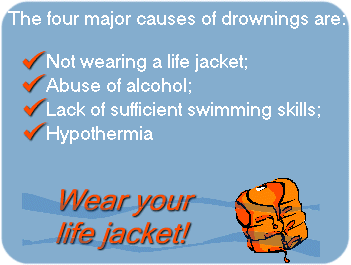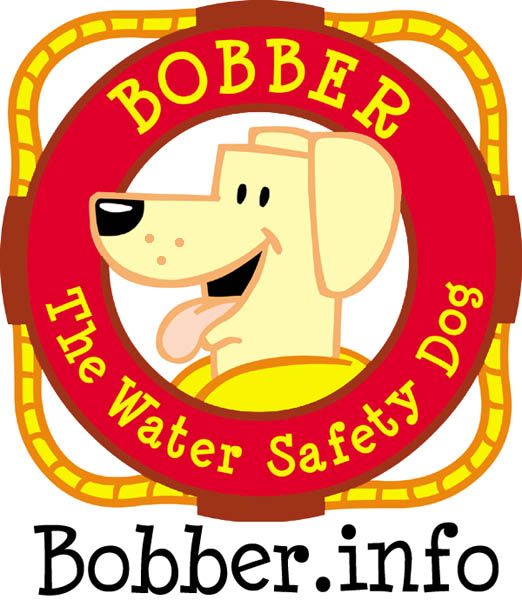Fort Worth District
Lakes and Recreation Menu
The Water Safety Program
Check out our new traveling water safety trailer! It has life jackets that you can borrow while swimming at our designated swim beaches.
Look for it during holidays and weekends!
The USACE hosts 370 million visits annually at its more than 400 lake and river projects where people enjoy fishing, boating, hiking and more. While outdoor recreation is fun and healthy, USACE urges our visitors to expect the unexpected.
Wear a life jacket.
- Statistics show that 90 percent of those who drown at USACE lakes and rivers may have survived if they had worn a life jacket.
- Drowning is the nation's second leading cause of accidental death.
- Expect the unexpected. Accidents happen, even to responsible boaters. A life jacket can provide time for rescue.
Know your swimming ability.
- Swimming in open water is more difficult than in a swimming pool because a swimmer can tire more quickly and get into trouble.
- Conditions can change quickly in open water.
- Swim in designated areas and wear a life jacket. A life jacket will help conserve energy and provide flotation.
Be a Water Watcher.
- When on or near the water watch your children.
- A child can drown in 20 seconds
- Drowning happens quickly and quietly. A drowning victim's head will be back, they will be gasping for air, they will not be yelling, and their arms will be slapping the water as though trying to climb out of the water.
Avoid exhaust fumes around boats
Carbon monoxide, an invisible killer, can accumulate anywhere in or around boats regardless of what type of boat.Install and maintain carbon monoxide detectors on and inside your boat. Maintain a fresh circulation of air through and around your boat at all times. Early symptoms of carbon monoxide poisoning include- eye irritation
- headache
- nausea
- weakness
- dizziness
Water Safety
We hope that your visit is safe and enjoyable.
Please take a few moments to read the following precautions that should be taken when at the lake.
- Learn to swim.
- Never swim alone.
- Swim only in designated areas.
- Watch children at all times. NEVER leave a child unattended while near the water.
- Wear a lifejacket. Children under the age of 13 are required by law to wear PFDs while on the water in the State of Texas.
- Alcohol and water do not mix. NEVER consume alcohol while boating or swimming.
- Never rely on toys such as inner tubes and rafts to stay afloat.
- Do not over estimate your ability to swim.
- Never dive into lakes or rivers.
- Boaters should observe all warning signs and buoys. Please use caution when boating in unfamiliar waters.
Enjoy your visit and plan to return home safely!
Water Safety Tips
Wear Coast Guard approved life jackets
- When around water, most people do not expect to end up in the water and of those who drown, were not wearing life jacket.
- Water and alcohol do not mix.
- Check weather forecasts before embarking on water activities.
- Be aware of your personal water skill and knowledge.
Boating Safety Tips
- Wear a Coast Guard approved life jacket, many types and styles are available.
- Check all safety equipment, replace and repair before launching.
- File a float plan with family and friends.
- Be a courteousness boater, follow the rules of the road.
- Swimming near or under platforms on outboard motorboats, where CO2 (carbon monoxide) fumes accumulate, can kill.
Swimming Tips
- Wear a Coast Guard approved life jacket, many types and styles are available.
- Learning to swim is an important skill for all ages.
- Never swim alone, always swim with a buddy.
- Always swim in designated swimming areas.
- Diving or jumping from cliffs and bluffs invites tragedy.
- Always supervise children of all ages when around open bodies of water.
Drowning Doesn’t Look Like Drowning
by Mario Vittone on May 3, 2010
The new captain jumped from the deck, fully dressed, and sprinted through the water. A former lifeguard, he kept his eyes on his victim as he headed straight for the couple swimming between their anchored sportfisher and the beach. “I think he thinks you’re drowning,” the husband said to his wife. They had been splashing each other and she had screamed but now they were just standing, neck-deep on the sand bar. “We’re fine, what is he doing?” she asked, a little annoyed. “We’re fine!” the husband yelled, waving him off, but his captain kept swimming hard. ”Move!” he barked as he sprinted between the stunned owners. Directly behind them, not ten feet away, their nine-year-old daughter was drowning. Safely above the surface in the arms of the captain, she burst into tears, “Daddy!”
How did this captain know – from fifty feet away – what the father couldn’t recognize from just ten? Drowning is not the violent, splashing, call for help that most people expect. The captain was trained to recognize drowning by experts and years of experience. The father, on the other hand, had learned what drowning looks like by watching television. If you spend time on or near the water (hint: that’s all of us) then you should make sure that you and your crew knows what to look for whenever people enter the water. Until she cried a tearful, “Daddy,” she hadn’t made a sound. As a former Coast Guard rescue swimmer, I wasn’t surprised at all by this story. Drowning is almost always a deceptively quiet event. The waving, splashing, and yelling that dramatic conditioning (television) prepares us to look for, is rarely seen in real life.
The Instinctive Drowning Response – so named by Francesco A. Pia, Ph.D., is what people do to avoid actual or perceived suffocation in the water. And it does not look like most people expect. There is very little splashing, no waving, and no yelling or calls for help of any kind. To get an idea of just how quiet and undramatic from the surface drowning can be, consider this: It is the number two cause of accidental death in children, age 15 and under (just behind vehicle accidents) – of the approximately 750 children who will drown next year, about 375 of them will do so within 25 yards of a parent or other adult. In ten percent of those drownings, the adult will actually watch them do it, having no idea it is happening (source: CDC). Drowning does not look like drowning – Dr. Pia, in an article in the Coast Guard’s On Scene Magazine, described the instinctive drowning response like this:
1. Except in rare circumstances, drowning people are physiologically unable to call out for help. The respiratory system was designed for breathing. Speech is the secondary or overlaid function. Breathing must be fulfilled, before speech occurs.
2. Drowning people’s mouths alternately sink below and reappear above the surface of the water. The mouths of drowning people are not above the surface of the water long enough for them to exhale, inhale, and call out for help. When the drowning people’s mouths are above the surface, they exhale and inhale quickly as their mouths start to sink below the surface of the water.
3. Drowning people cannot wave for help. Nature instinctively forces them to extend their arms laterally and press down on the water’s surface. Pressing down on the surface of the water, permits drowning people to leverage their bodies so they can lift their mouths out of the water to breathe.
4. Throughout the Instinctive Drowning Response, drowning people cannot voluntarily control their arm movements. Physiologically, drowning people who are struggling on the surface of the water cannot stop drowning and perform voluntary movements such as waving for help, moving toward a rescuer, or reaching out for a piece of rescue equipment.
5. From beginning to end of the Instinctive Drowning Response people’s bodies remain upright in the water, with no evidence of a supporting kick. Unless rescued by a trained lifeguard, these drowning people can only struggle on the surface of the water from 20 to 60 seconds before submersion occurs.
(Source: On Scene Magazine: Fall 2006 http://www.uscg.mil/hq/cg5/cg534/On%20Scene/OSFall06.pdf#page=16 (page 14))
This doesn’t mean that a person that is yelling for help and thrashing isn’t in real trouble – they are experiencing aquatic distress. Not always present before the instinctive drowning response, aquatic distress doesn’t last long – but unlike true drowning, these victims can still assist in their own rescue. They can grab lifelines, throw rings, etc.
Look for these other signs of drowning when persons are in the water:
* Head low in the water, mouth at water level
* Head tilted back with mouth open
* Eyes glassy and empty, unable to focus
* Eyes closed
* Hair over forehead or eyes
* Not using legs – Vertical
* Hyperventilating or gasping
* Trying to swim in a particular direction but not making headway
* Trying to roll over on the back
* Appear to be climbing an invisible ladder.
So if a crew member falls overboard and everything looks OK – don’t be too sure. Sometimes the most common indication that someone is drowning is that they don’t look like they’re drowning. They may just look like they are treading water and looking up at the deck. One way to be sure? Ask them, “Are you alright?” If they can answer at all – they probably are. If they return a blank stare, you may have less than 30 seconds to get to them. And parents – children playing in the water make noise. When they get quiet, you get to them and find out why.
U.S. Coast Guard.
Visit the following link to learn more about Water Safety.





